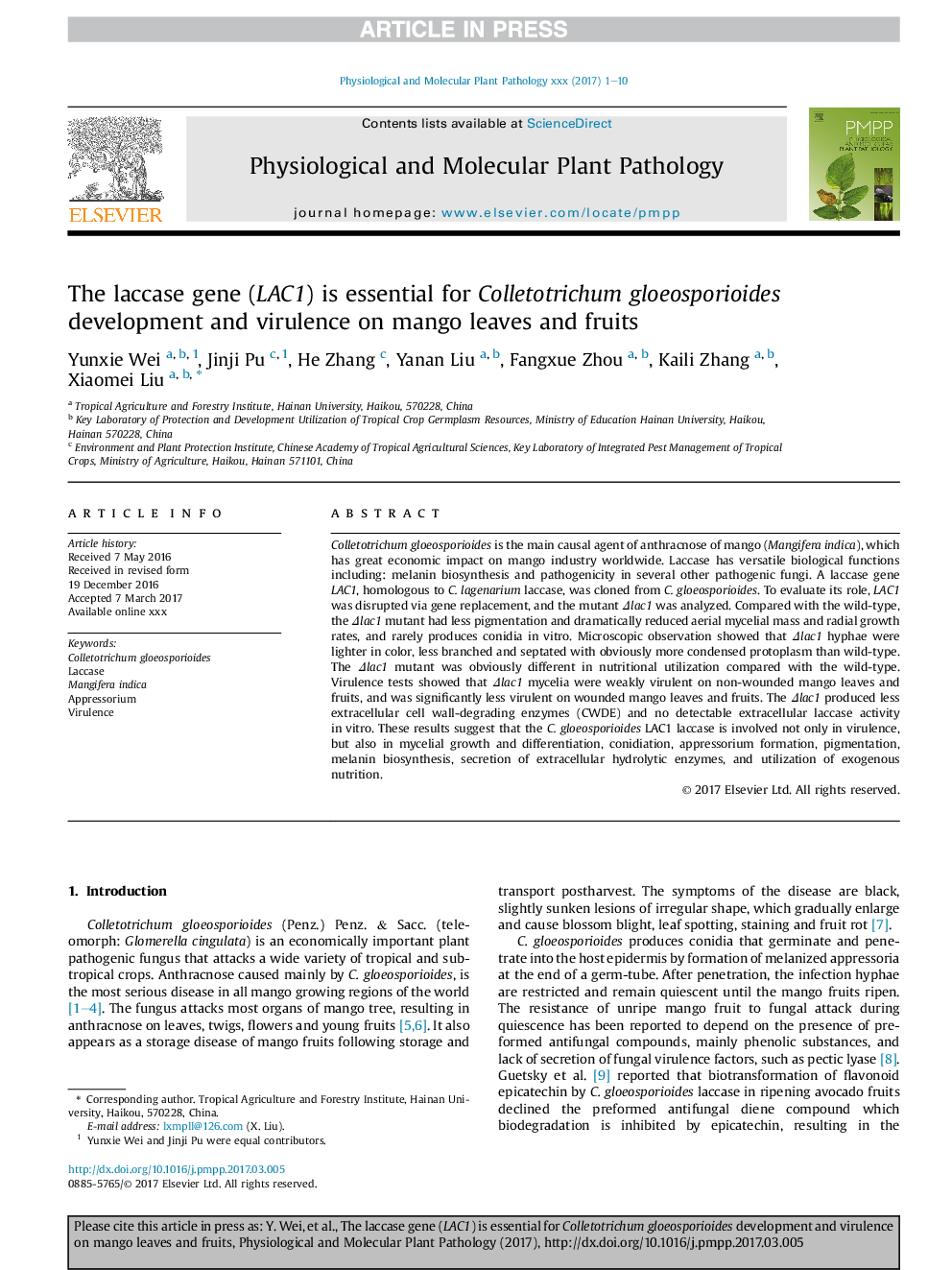| Article ID | Journal | Published Year | Pages | File Type |
|---|---|---|---|---|
| 5592594 | Physiological and Molecular Plant Pathology | 2017 | 10 Pages |
Abstract
Colletotrichum gloeosporioides is the main causal agent of anthracnose of mango (Mangifera indica), which has great economic impact on mango industry worldwide. Laccase has versatile biological functions including: melanin biosynthesis and pathogenicity in several other pathogenic fungi. A laccase gene LAC1, homologous to C. lagenarium laccase, was cloned from C. gloeosporioides. To evaluate its role, LAC1 was disrupted via gene replacement, and the mutant Îlac1 was analyzed. Compared with the wild-type, the Îlac1 mutant had less pigmentation and dramatically reduced aerial mycelial mass and radial growth rates, and rarely produces conidia in vitro. Microscopic observation showed that Îlac1 hyphae were lighter in color, less branched and septated with obviously more condensed protoplasm than wild-type. The Îlac1 mutant was obviously different in nutritional utilization compared with the wild-type. Virulence tests showed that Îlac1 mycelia were weakly virulent on non-wounded mango leaves and fruits, and was significantly less virulent on wounded mango leaves and fruits. The Îlac1 produced less extracellular cell wall-degrading enzymes (CWDE) and no detectable extracellular laccase activity in vitro. These results suggest that the C. gloeosporioides LAC1 laccase is involved not only in virulence, but also in mycelial growth and differentiation, conidiation, appressorium formation, pigmentation, melanin biosynthesis, secretion of extracellular hydrolytic enzymes, and utilization of exogenous nutrition.
Related Topics
Life Sciences
Agricultural and Biological Sciences
Plant Science
Authors
Yunxie Wei, Jinji Pu, He Zhang, Yanan Liu, Fangxue Zhou, Kaili Zhang, Xiaomei Liu,
